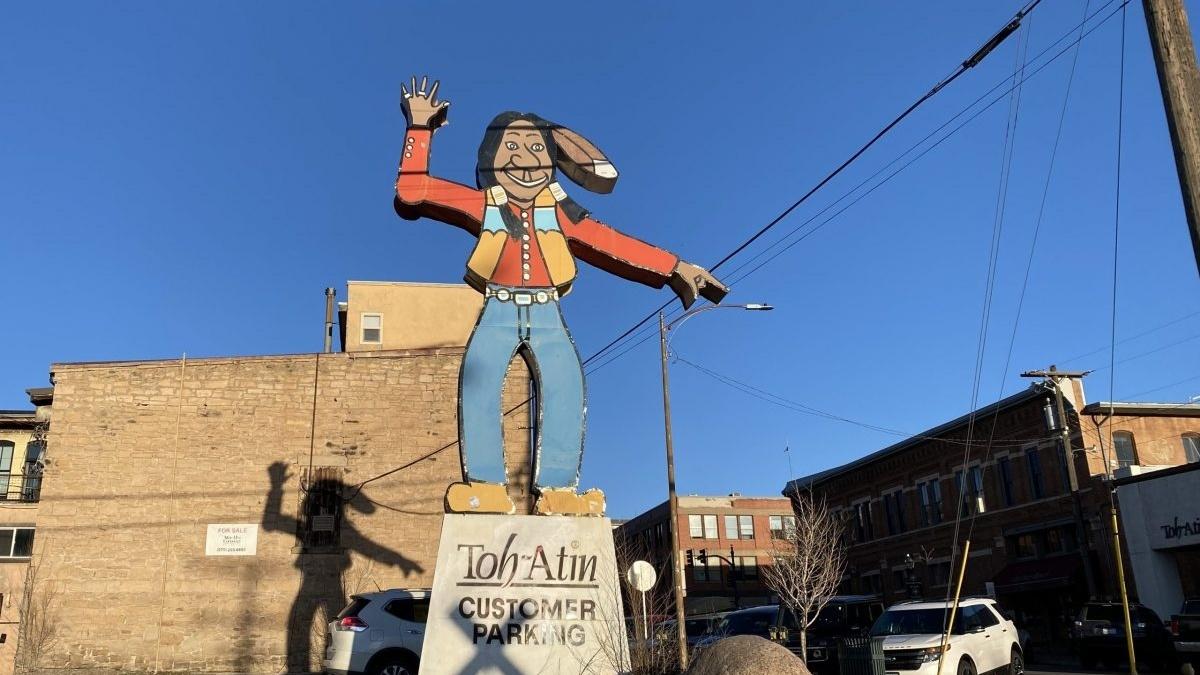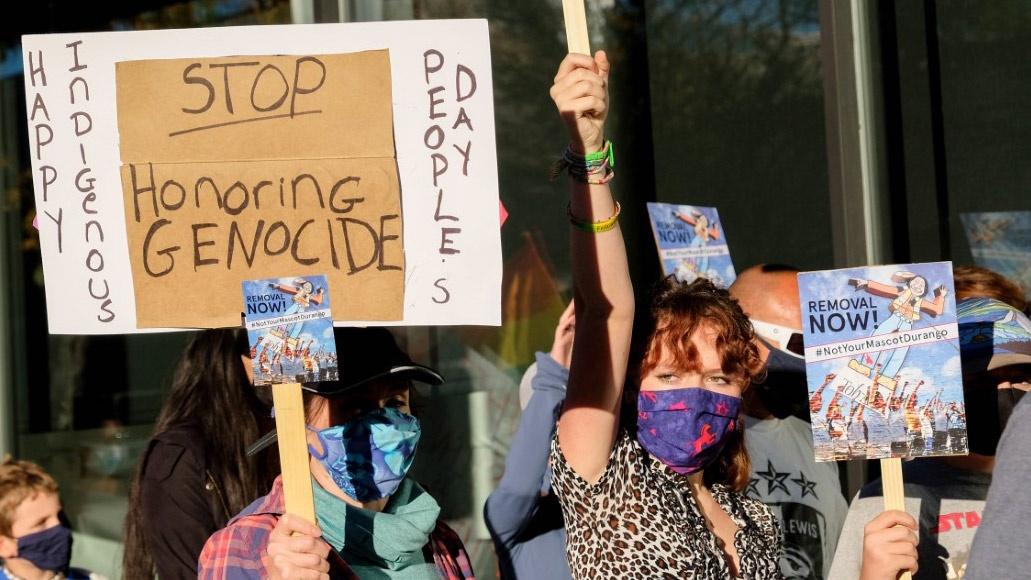DURANGO, Colo. — The sign stands tall in the center of Downtown Durango, just off of main street. A depiction of a smiling man with brown skin, wearing jeans and a feather in his hair, waving to passers by. The 20-foot caricature is mounted on top of the Toh-Atin Gallery Customer Parking sign.
"It's a sign. It's been a big part of Durango for a long time,"
Sitting inside the gallery with owner Jackson Clark, he looks out at the Chief.
"It's on private property, it's not bothering the artists that we work with. The clients that come in here like it."
Jackson Clark is white. He purchased the statue in the 1980s at an auction for $300. Recently, he’s received plenty of criticism for it. There’s even some red paint visible on it.
"There was some vandalism that occurred in fact, you can still see there's paint on it and it needs to be repainted."
But for many Native people and for people who are concerned about Indigenous representation, the sign is offensive.
"I said to myself, is this real? Why is this here?"
When writer Kirbie Bennett relocated to Durango from the Navajo Nation, the sign caught him by surprise.
"I felt like moving here to Durango, this inviting atmosphere. And then I encountered that statue. And that, to me, that was like a little reminder that this area isn't as progressive as I made it out to be."
Bennett wrote an essay in 2020, voicing concern about the sign. And that year, many Indigenous community members called for its removal. There were demonstrations, petitions circulated, and the City of Durango formed a working group to address concerns about the sign.
"I think it was 2020, the Indigenous Peoples day, when they had a march,"
Jen Olguin, is a Southern Ute woman.
"In Durango, I participated in that and we had signs featuring like, Missing and Murdered Indigenous Women and Relatives. So we had marched down Main and stopped at the Toh-Atin statue."
"There was a palpable wave and outcry against the statue."
Kirbie Bennet says the sign was out of touch with contemporary ideas about depictions of Native Americans.
"It really is a signifier of white nationalism and it'll be a game changer if it's ever removed."
Even when the sign was posted outside of the Chief Diner, from the 1950’s to 1980’s, it upset some Native Americans.
"The big nose and just that goofy looking face, waving his hand, making native people look like they're stupid and foolish."
That’s Arthur Neskahi, a Navajo man who lives in Cortez. He was a student at Fort Lewis College when he demonstrated outside the diner in the 1970s.
"I think it's a racist, racist image, just symbolic of dehumanizing us Native American people. Not a very good way to portray us."
But Neskahi remembers a time in his youth where his father felt welcome at the diner – perhaps due to the Chief.
"My father, he liked going there. And so as a kid, I went in there with him. He felt comfortable going in there. And maybe they felt that it was a welcoming thing or something."
And some Native people did feel this way about the Chief and the Chief Diner. Pearl Casias, former chairman of the Southern Ute tribe, saw the statue as welcoming to Native people.
"Seeing the chief there was, for a little kid and a young teenager, it impressed me because the Chief Diner was part of our, representing us as Indigenous and part of the community."
Casias grew up in Ignacio on the Southern Ute Reservation. As a child, she remembers eating at the Chief with her family. And when the diner went out of business, she was glad the sign found a new home in town.
"Oh, that was nice, you know, they didn't get rid of the chief. And he's still an integral part of Durango. Because, to me, he was my history as an individual tribal member, you know, he represented who we were. It felt really nice to have him closer in town."
Even after Jackson Clark attended community meetings, and heard from those who were offended by the sign, he says he still won’t remove it.
"I'm stubborn enough that I've lived in Durango my whole life and I just have no interest in taking it down."
And so for now, critics like Arthur Neskahi will just have to look the other way. Neskahi is used to that.
"Just one of the long list of things we have to put up with you know, there's everything from all the mascots, all types of imagery, pain in the rib and the side but we just have to put up with."
Two petitions circulated in 2020. Around 8000 people signed the petition to take down the Chief. About 5000 signed the one to save it.
Clark Adomaitis is a reporter for KSUT. Adam Burke was the editor for this story.




